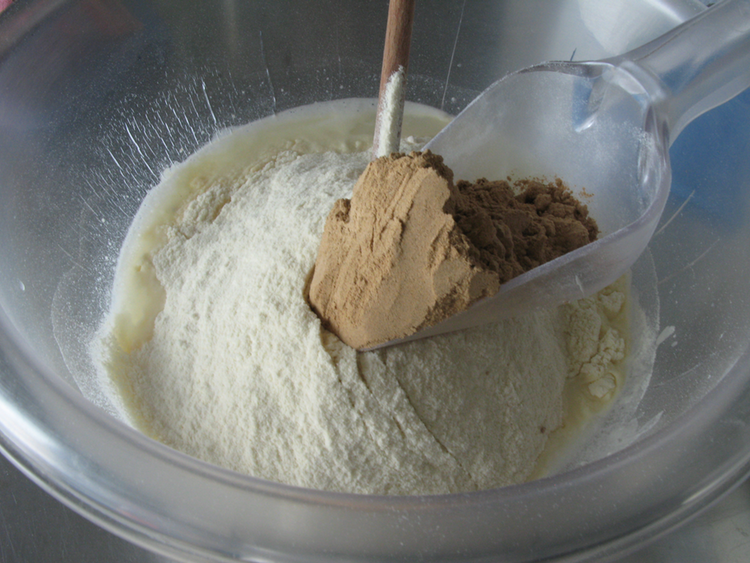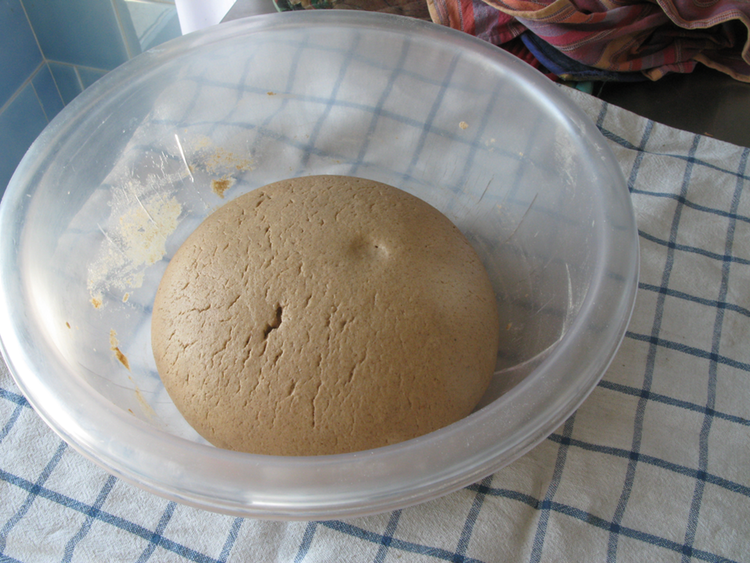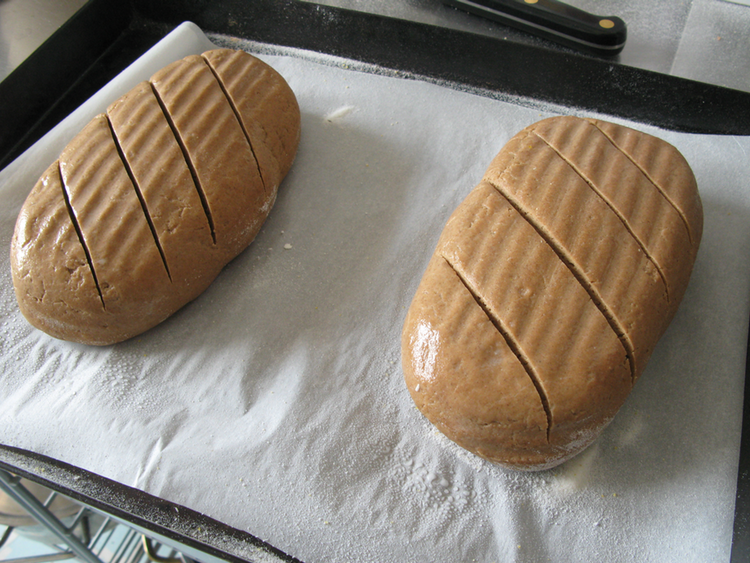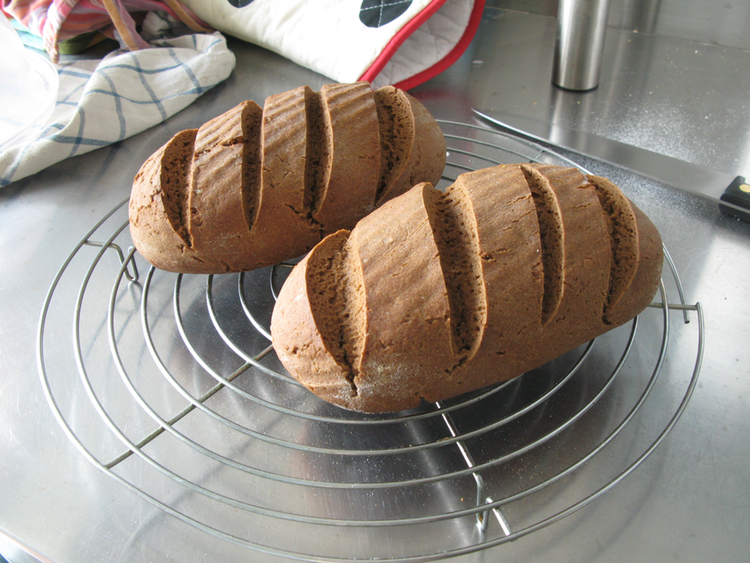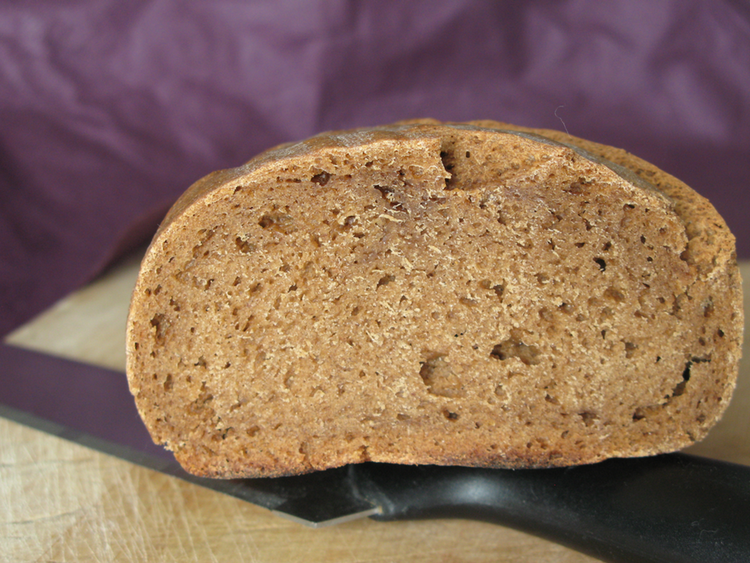
There are so many great crispbreads in Sweden, from the very traditional round ones, still with a hole in the middle so you can thread them on a pole for winter storage, to utterly modern things studded with chia seeds. I love them all, but most of the crackery things available commercially in Rome just aren’t as good. Nor do they need to be, with great pizza bianca around the corner. So, time to make my own.
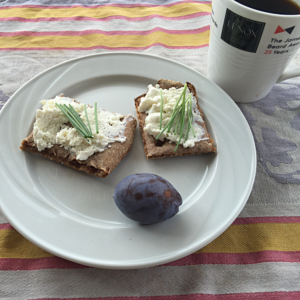 It’s been 2 1/2 years since I last tried, and that was a qualified success. So I decided to use the same recipe as before – Dark Crisp Rye Bread from Dan Lepard’s The Handmade Loaf – and adjust the cooking time down. This time I am going to give the recipe here, as I think merely discovering the correct cooking time represents an improvement.
It’s been 2 1/2 years since I last tried, and that was a qualified success. So I decided to use the same recipe as before – Dark Crisp Rye Bread from Dan Lepard’s The Handmade Loaf – and adjust the cooking time down. This time I am going to give the recipe here, as I think merely discovering the correct cooking time represents an improvement.
Ingredients
100 gm rye leaven (50% hydration)
200 gm warm water
200 gm wholemeal rye flour
4gm fine salt
Method
First build the leaven. I use about 20 gm of my ordinary 100% hydration sourdough starter, mixed with 40 gm of water and 80 gm of rye flour to give a final leaven at slightly more than 50% hydration. In a small bowl mix the starter with the water first, then stir in the rye flour until you have a stiff paste. Pack that down into the bowl, cover with a plate and leave for 8–12 hours. It will puff up quite a bit.
For the dough, I used all the leaven, but you can be a stickler and weigh out 100 gm. I omit the small amount of yeast that Dan Lepard uses. Put the leaven into a large bowl, add the water and salt and break up the leaven a bit with a wooden spoon. Add the rye flour and stir until it is all incorporated and you have a somewhat sticky paste. Push it down into the bowl and smooth the top as best as you can, just to reduce the surface area so it down’t dry out too much. Cover with a damp cloth and leave in a warm place for about 3 hours.
Prepare two pieces of baking parchment, the size of your baking tray. Scrape half of the dough paste onto the centre of one of the pieces. Dust heavily with rye flour and roll out to around 0.5 cm thick. Dust with more flour if it shows the slightest sign of sticking to the rolling pin. Repeat with the other half of the dough. Cover the dough on the parchment with a dry cloth and leave in a warm place for about 2 hours. Again, the dough will puff up a little.
Preheat the oven to 220°C. Using the tip of a wet knife (to stop sticking) cut the rolled-out dough into shapes that please you. Using the end of a wooden spoon handle, poke the surface all over to create dimples. Slide the parchment directly onto your baking stone (if you have one) or onto a baking tray and bake for about 25 minutes, checking to see that they aren’t burning.
-
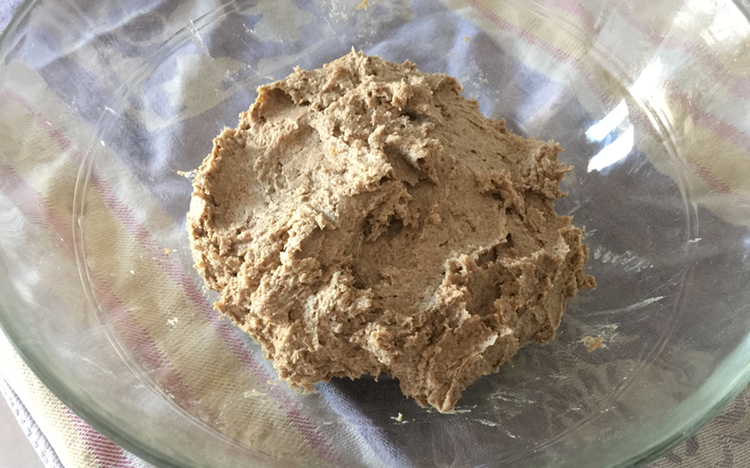
-
Dough
-
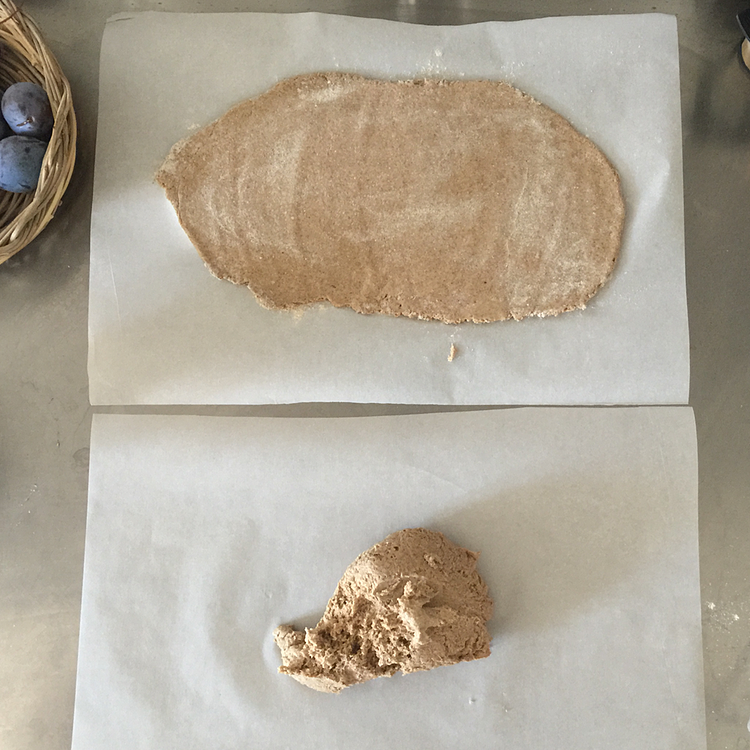
-
Rolled
-

-
Half baked
-
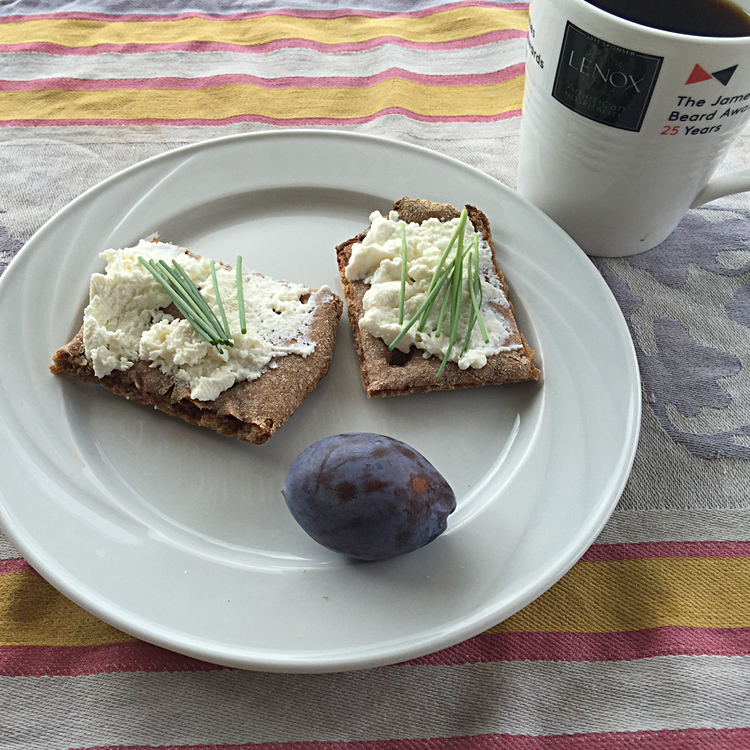
-
Snack
At that point I took the crackers from the oven, allowed them to cool for a minute or two, then broke them up and left them on a wire rack to cool. They were very good, at least on the first night, but by the next day I confess that things were not as I had hoped. The thicker crackers, especially, had become almost impossibly hard and tooth-threatening. I think the problem is that the inside was still somewhat moist, and some process as yet unknown to me had overnight rendered the entire cracker almost unchewable. Once chewed, they were still delicious, but not for the weak.
May I be excused a bit of doggerel?
“You are old,” said the youth, “and your jaws are too weak
For anything tougher than suet;
Yet you finished the goose, with the bones and the beak –
Pray how did you manage to do it?”
“In my youth,” said his father, “I took to the law,
And argued each case with my wife;
And the muscular strength, which it gave to my jaw,
Has lasted the rest of my life.”
Anyway, I put the crackers in a very low oven for half an hour and then left them there with the door open for another couple of hours, and that seems to have dried them out to the point where they are crisp but not hard. Does that make sense?
I’m determined to keep trying. We had so many great, different crackers in Sweden, many with whole seeds pressed into the surface, that I want to recreate here. And I’m wondering, would a pasta machine be able to handle such a dough, to get the really thin crackers? I plan to find out.
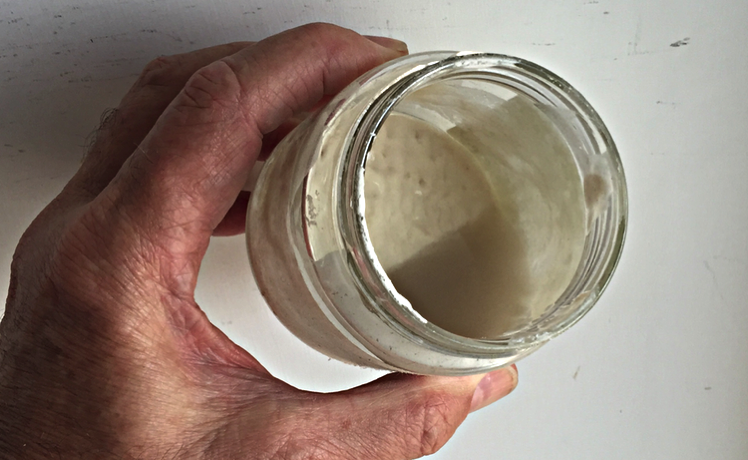
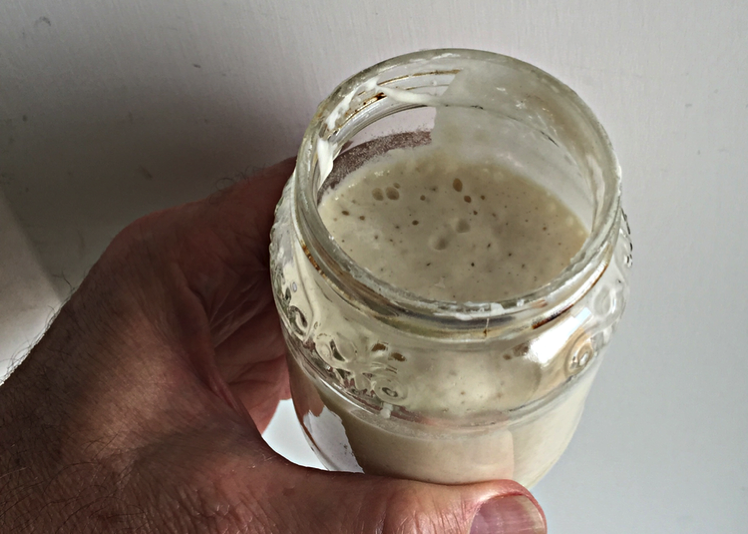
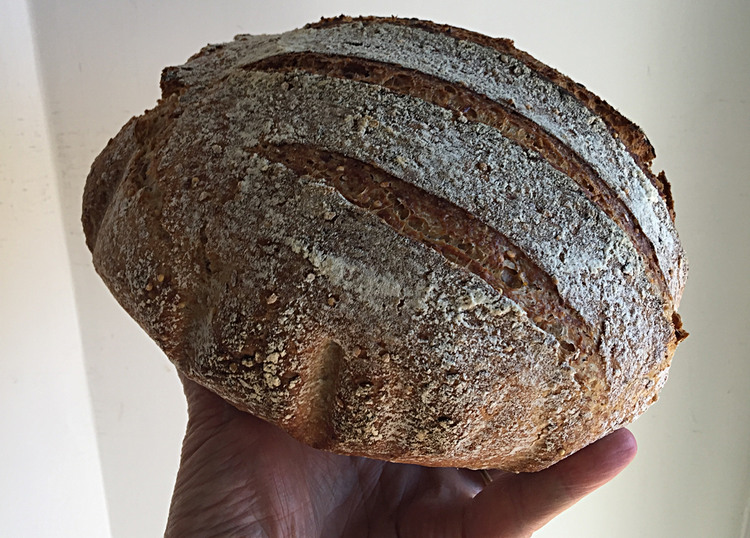
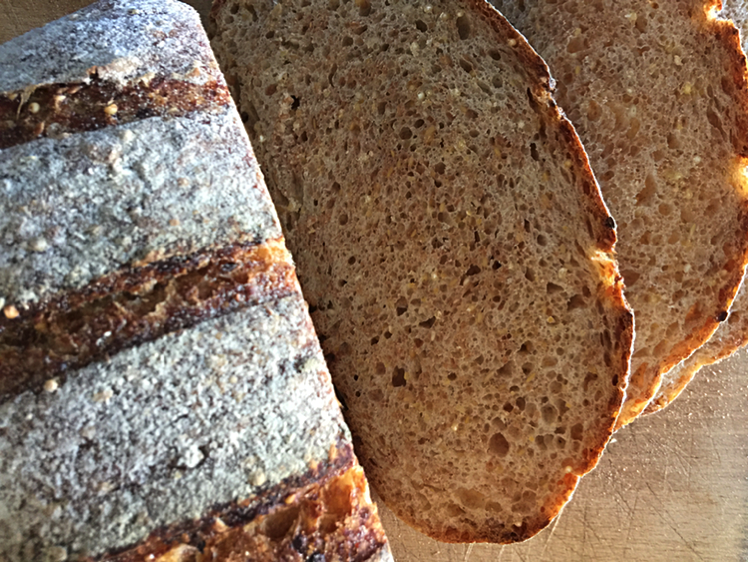
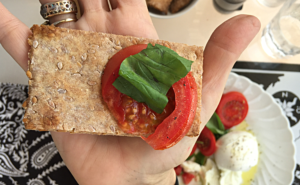
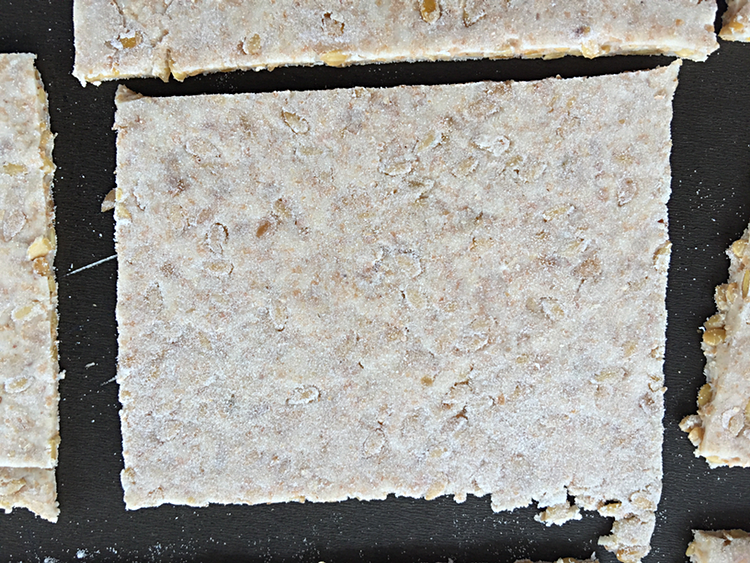
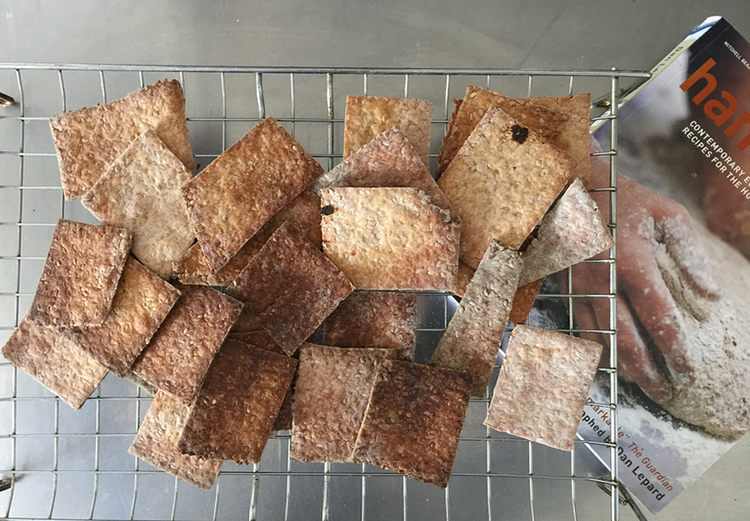

 It’s been 2 1/2 years since I last tried, and that was a qualified success. So I decided to use the
It’s been 2 1/2 years since I last tried, and that was a qualified success. So I decided to use the 



